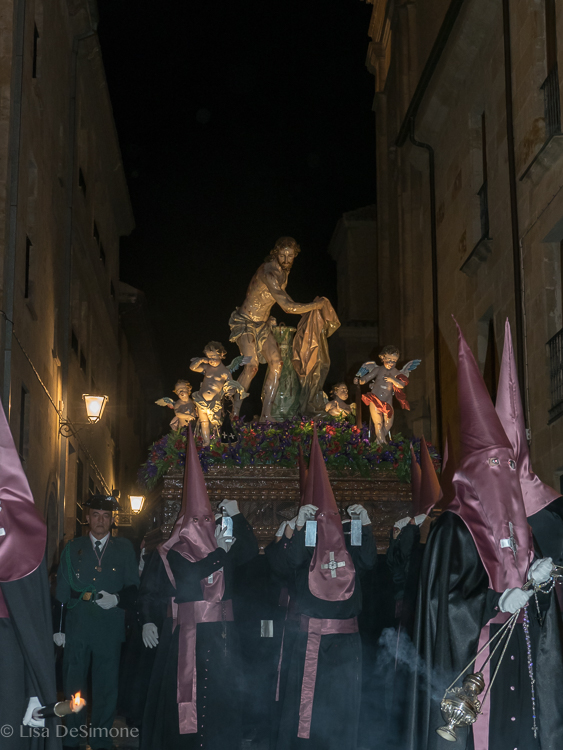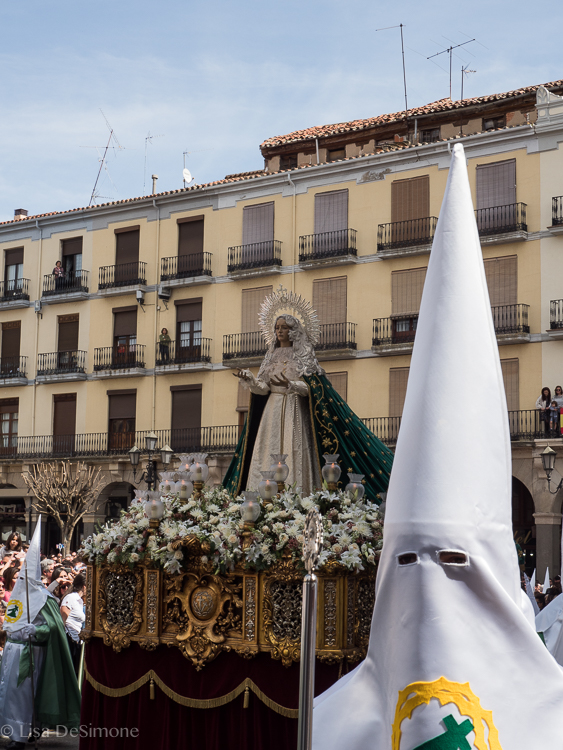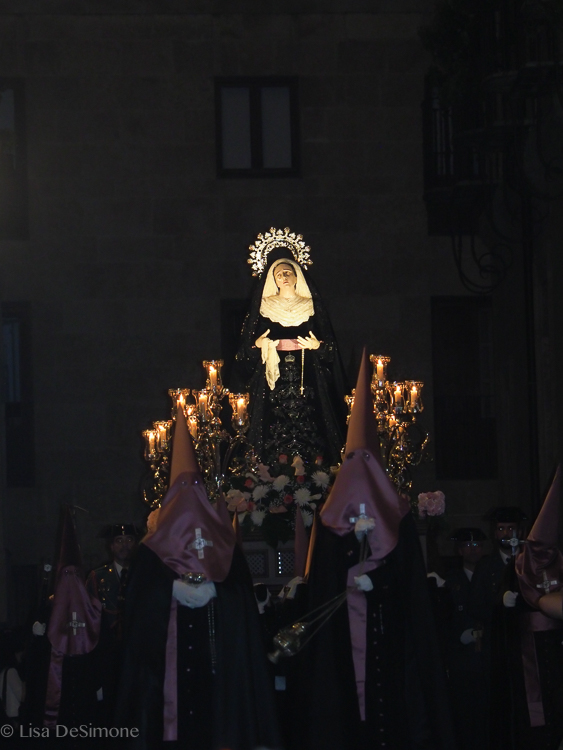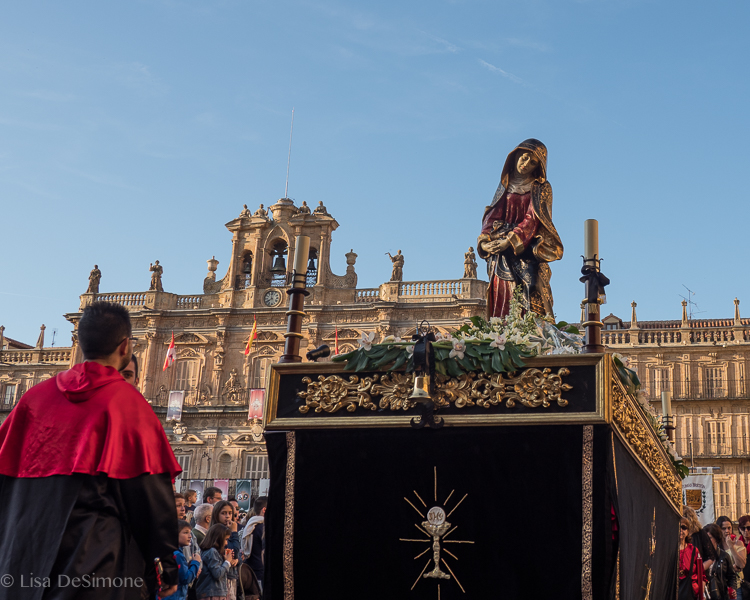Through the Lens: Semana Santa (Holy Week) in Spain
/Holy Week (Semana Santa) is the biggest religious celebration of the year in Spain. It is a time for Spaniards to take to the streets and watch elaborate reenactments of the Passion of Christ, as well as enjoy some time off work in the company of their families and friends. I was very curious to witness these celebrations for myself, so during my month of traveling around Spain I decided to spend an entire week in the lovely university town of Salamanca, Spain - directly in the thick of things!
The crowds watching the semana santa celebrations
Across the country, Semana Santa celebrations can be quite different. For example, in Andalusia, the celebrations are glamorous and festive. Celebrations in the central region of Castille La Mancha (where I stayed) are famous for their more sombre - and some would say more authentic - Semana Santa parades. Regardless of how Semana Santa is celebrated, the processions that take place are steeped in tradition and are highly religious.
Semana Santa customs in Spain involve processions of various brotherhoods or fraternities through the streets of town. These religious associations have their origins in the Middle Ages and Baroque Periods, and membership is usually open to any Catholic person. Family tradition is an important element to become a member or “brother".
The start of a procession is typically marked by the carrying of a giant cross, with the scent of incense floating through the air.
Another common feature of the Semana Santa processions in Spain is the use of the nazareno, or penitential robe, worn by many of the procession participants. The robes were widely used in the medieval period for penitents who could demonstrate their penance by walking in the procession, while keeping their identity a secret.
The robe consists of a tunic, a hood with conical tip (used to conceal the face of the wearer), and sometimes a cloak. The exact colors and forms of these robes depend on the particular procession and the brotherhood of the wearer.
Many of the penitents carry individual processional candles or wooden crosses; many walk the city streets barefoot; and, in some places, some may carry shackles and wear chains on their feet as penance.
The other common feature of the Semana Santa procession is that every brotherhood carries magnificent pasos (or floats) with sculptures that depict different scenes from the gospels related to the Passion of Christ or the Sorrows of the Virgin Mary. Many of these floats are art pieces created hundreds of years ago, and are preserved and maintained for centuries by the brotherhoods.






Music also plays an important part in Semana Santa processions - most are accompanied by live marching bands that play religious music. Why did I decide to spend Holy Week in Salamanca? Mostly because I wanted to photograph the more solemn processions, and Salamanca has one of the oldest celebrations in Spain, with the earliest penance processions traced back to 1240.
In Salamanca, 10,000 penitents associated to 16 brotherhoods organize 22 processions that walk the streets of the center carrying 41 pasos over the course of the 10 days leading up to Easter Sunday. Semana Santa in Salamanca was declared a “Fiesta of International Tourist Interest of Spain” in 2003.
everyone wants a view of the processions!
One afternoon I drove to the nearby town of Zamora, to witness the celebrations there. Zamora’s Semana Santa celebrations are also very well known: they are the oldest celebrations in Spain, with the earliest penance processions can be traced back to 1179!
Holy Week in Zamora is celebrated by 16 sisterhoods and fraternities that perform 17 penance processions on the streets of the old city. Thousands of penitents walk the streets while the processions are attended by a crowd of locals and visitors. Zamora increases its population 5 times, up to 300.000 people during the festival! I loved Zamora, and believe it would make an excellent base for experiencing Holy Week as well.
One difference that I noticed during the processions in Zamora were the women penitents who were marching. Dressed in sober black mid-length dresses and gloves, the girls and women also wore black lace mantillas rising high above their heads with black lace flowing down their backs. These intricate headpieces, native to Spanish culture since the 16th century, are worn by those of faith, symbolizing the veiling of the physical so that the beauty of God can be illuminated. Wearing of the mantilla is common in the south of Spain, but were absent in Salamanca.
Overall, I thoroughly enjoyed my week in Salamanca. I was able to witness the events in a very relaxed manner, choosing the processions I wanted to see and never feeling stressed or rushed. For anyone interested in witnessing different religious celebrations around the world, I recommend attending at least a few days of Semana Santa in Spain.
TIP: The processions happen all week long, at different hours of the day and sometimes there are multiple processions in a day. The best way to know when and where to find the processions is to pick up a guide at the Tourist Information office (there is one located right in Plaza Major). The guide gives you all the details you need.



























